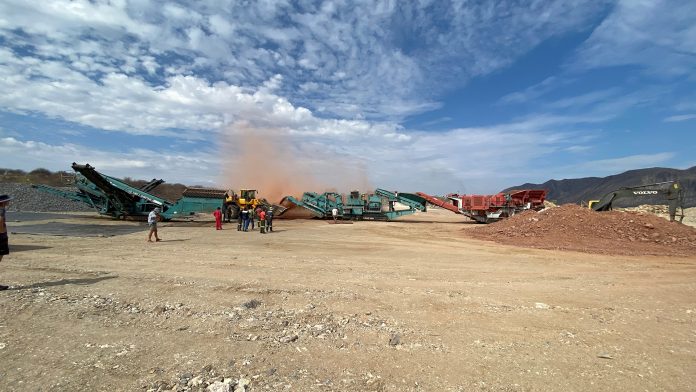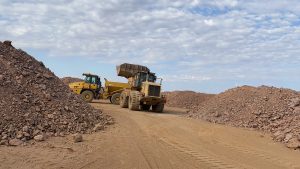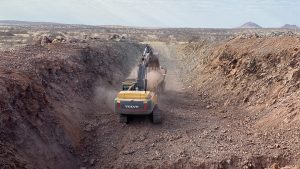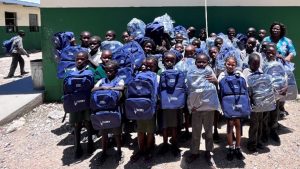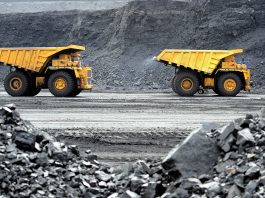Namibia Critical Metals, together with its strategic partner JOGMEC, is rapidly accelerating development of its flagship Lofdal rare earth deposit in Namibia.
Namibia Critical Metals Inc. (TSXV:NMI OTC:NMREF) is developing the Tier-1 Heavy Rare Earth Project, Lofdal, which is a major rare earth deposit containing dysprosium and terbium.
Demand for these critical metals used in permanent magnets for electric vehicles (EVs), wind turbines, and other electronics is driven by innovations linked to energy and technology transformations. The geopolitical risks associated with sourcing many of these metals has become a repeated concern for manufacturers and end users. Namibia is a proven and stable mining jurisdiction. The Lofdal Project is fully permitted with a 25-year mining license and is under a joint venture (JV) agreement with the Japan Organization for Metals and Energy Security (JOGMEC).
Lofdal is a dysprosium and terbium rare earth deposit and one of only two xenotime-type heavy rare earth deposits under development in the world. Namibia Critical Metals published a maiden resource in 2012 and an initial preliminary economic assessment (PEA) two years later, but it was the work done in the last two years that established Lofdal as one of the richest dysprosium and terbium deposits in the world, outside of China. A very valid criticism in the past was that the project was too small, with a resource of only 6 million tons and a life of mine of seven years. These early criticisms have been completely dispelled. After a significant drilling campaign in 2020, Namibia Critical Metals increased the size of its resource from 6 MT to an impressive 53 MT, with 4.7 million kg of contained dysprosium and 725,000 kg of terbium.
Dysprosium and terbium, alongside neodymium and praseodymium (NdPr), are critical metals required in the making of permanent magnets for EV motors. Historically, China has had a stronghold on this market. Japan is ahead of other Western economies in terms of limiting that overwhelming dependence on China, but North America and Europe are starting to catch up in the scramble to wean off from Chinese supply.
STRONG Partnership
In 2020, Namibia Critical Metals entered a transformational transaction with the Japan Organization for Metals and Energy Security (JOGMEC), a state agency with a multi-billion-dollar annual budget and a mandate to secure the supply of natural resources for Japanese industry. A decade ago, JOGMEC did a JV with a little-known light rare earth Australian explorer that is now one of the largest rare earth companies in the world – Lynas Rare Earths. After funding Lynas with over $300m to date to secure supply of light rare earths, JOGMEC has turned its eyes to Lofdal as a potential long-term supplier of dysprosium and terbium. Japan is the biggest consumer of dysprosium after China.
Under the JV agreement, JOGMEC can fund C$20m in exploration and development, with the right to earn a 50% interest in Lofdal. JOGMEC can also purchase another 1% for a controlling stake, at which stage Namibia Critical Metals can either participate at 49% or dilute to a carried working interest of no less than 21%. Besides securing project financing, possibly with no further dilution for shareholders, through this transaction the company is also receiving an operator fee that covers many of its overheads.
In April, the company announced that its JOGMEC partner has committed additional funds to the ongoing exploration and development programme, now totalling C$10,375,000 through to 31 May 2023, which satisfies the Term 2 Expenditure requirement of C$10m to earn the first 40% interest in the Lofdal Project.
The company is currently completing a corporate restructuring to facilitate JOGMEC’s holding of its initial 40% interest in the Lofdal Rare Earth Project as it moves into Term 3 of the agreement in June 2023.
Darrin Campbell, President of Namibia Critical Metals Inc., said: “Our joint venture with JOGMEC has delivered tremendous results with a six-fold increase in our resource, securing a 25-year mining licence, and delivering a very robust preliminary economic assessment in November 2022 for a much larger planned mining operation. We firmly believe that Lofdal will be a globally significant source of heavy rare earths.
“Most rare earth projects contain mainly light rare earths, meaning that they can produce little or negligible amounts of dysprosium and terbium.”
Another advantage is the actual location of the rare earth deposit. One of the biggest challenges for the rare earth industry is China’s continued stranglehold and dominance both in the supply of natural resources, as well as processing. The geopolitical risks associated with sourcing many of these metals have become a repeated concern for manufacturers and end users.
By way of contrast, Namibia is a stable mining jurisdiction that supports and recognises the importance of mining to the country. “There is little mining activity in north-western Namibia and the discovery of a rare earth deposit in this region would have significant economic benefits for the local population. We have established excellent relationships with all levels of government, as well as with the wider community in which we work,” added Campbell.
“We have always put a major focus on local employment and supporting the communities in which we work; we have a very strong ESG and Corporate Outreach Programme in Namibia.”
Social projects include support for a local orphanage and the recent establishment of an early learners’ programme to support children’s education.
Environmental, social, and governance (ESG) activities
The company expanded its ‘Early Learner’s Assistance Programme’ with the start of the 2023 school year. The company handed over 200 school uniforms and backpacks to five primary schools situated around the Lofdal rare earth project, four schools in Khorixas and one in Fransfontein. The handover ceremonies were accompanied by the co-ordinator of the Early Learner’s Assistance Programme from the Ministry of Education, representatives from the traditional authority, conservancies, and the company.
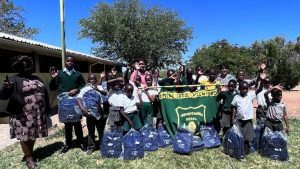
Campbell stated: “I am extremely proud of the work our team has done in the communities surrounding our project in Namibia. We have been very involved in supporting our communities for over a decade with ongoing financial support for a local orphanage in Khorixas, providing drilled water wells for local farmers near Lofdal and now the start of our Early Learner’s Assistance Programme. We have modelled this fantastic programme after the programme that was created by our corporate shareholder, Bannerman Energy, a few years ago for which they were awarded this year’s Mining Indaba ESG Forum Award for Community Engagement.”
It is important to have other processing options available outside of China, which are now developing in Europe and Southeast Asia, as well as in Canada and the US.
“By the time our project is ready to go into production, we anticipate having multiple options for metal separation available and are actively exploring all options.”
As a result of the 2020 drilling programme and the issuance of a 25-year mining license by the Namibian government, the company has updated the PEA and is starting down the path of a pre-feasibility study (PFS). Namibia Critical Metals believes it will be able to accelerate through the PFS stage quickly and cost-effectively by leveraging the PFS-level quality work it has done for the PEA. The company expects to publish the PFS, which is funded by its JOGMEC partners, in Q1 2024 and then progress to the definitive feasibility study (DFS) and a construction decision.
The company is anticipating a start in production in 2026. The construction phase of the rare earth project is envisaged to employ around 500 people, and production will have a permanent workforce of around 200, becoming a real economic driver for Namibia’s Kunene Region.
Please note, this article will also appear in the fourteenth edition of our quarterly publication.

